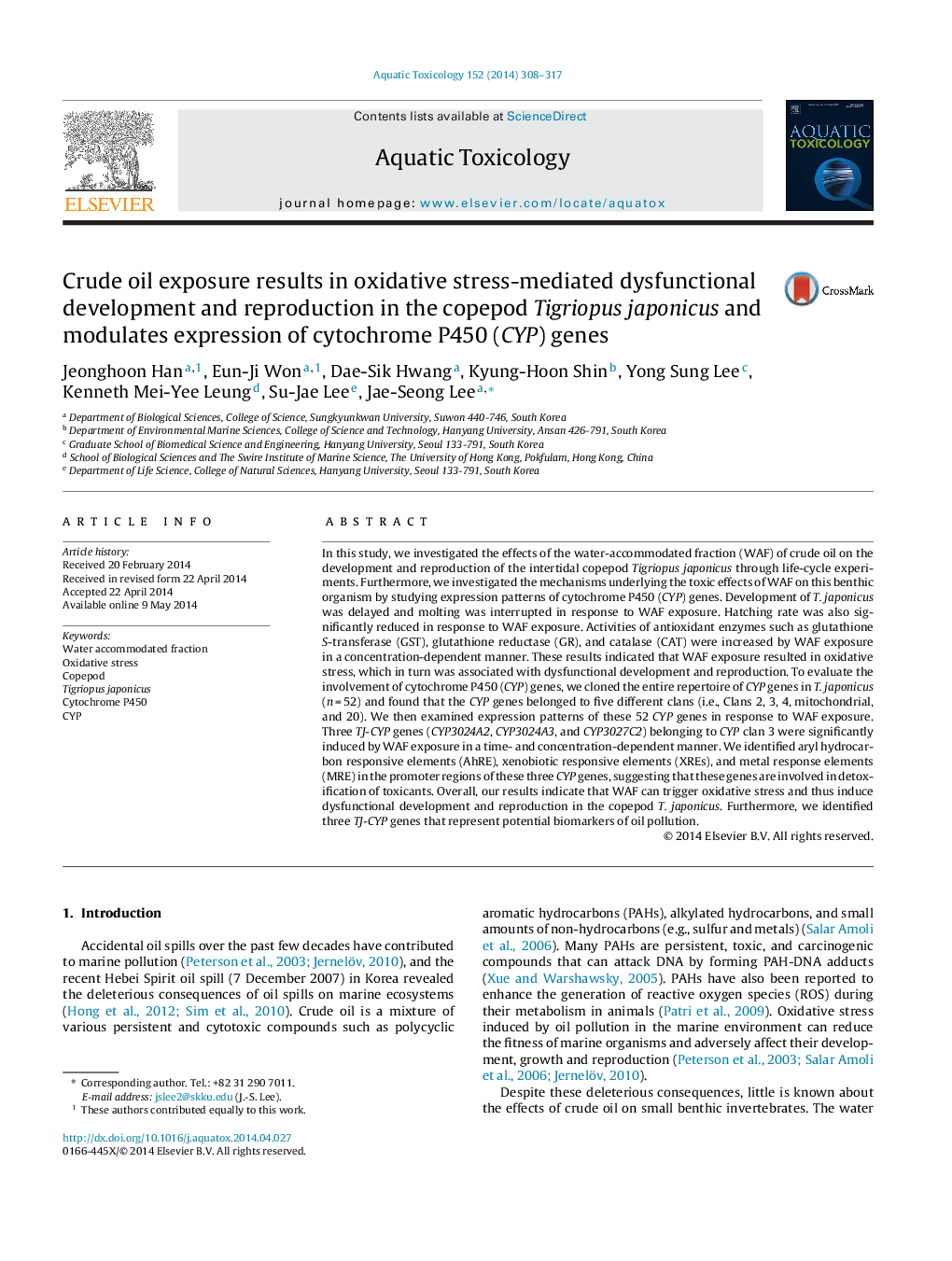| کد مقاله | کد نشریه | سال انتشار | مقاله انگلیسی | نسخه تمام متن |
|---|---|---|---|---|
| 6382415 | 1625953 | 2014 | 10 صفحه PDF | دانلود رایگان |
عنوان انگلیسی مقاله ISI
Crude oil exposure results in oxidative stress-mediated dysfunctional development and reproduction in the copepod Tigriopus japonicus and modulates expression of cytochrome P450 (CYP) genes
دانلود مقاله + سفارش ترجمه
دانلود مقاله ISI انگلیسی
رایگان برای ایرانیان
کلمات کلیدی
موضوعات مرتبط
علوم زیستی و بیوفناوری
علوم کشاورزی و بیولوژیک
علوم آبزیان
پیش نمایش صفحه اول مقاله

چکیده انگلیسی
In this study, we investigated the effects of the water-accommodated fraction (WAF) of crude oil on the development and reproduction of the intertidal copepod Tigriopus japonicus through life-cycle experiments. Furthermore, we investigated the mechanisms underlying the toxic effects of WAF on this benthic organism by studying expression patterns of cytochrome P450 (CYP) genes. Development of T. japonicus was delayed and molting was interrupted in response to WAF exposure. Hatching rate was also significantly reduced in response to WAF exposure. Activities of antioxidant enzymes such as glutathione S-transferase (GST), glutathione reductase (GR), and catalase (CAT) were increased by WAF exposure in a concentration-dependent manner. These results indicated that WAF exposure resulted in oxidative stress, which in turn was associated with dysfunctional development and reproduction. To evaluate the involvement of cytochrome P450 (CYP) genes, we cloned the entire repertoire of CYP genes in T. japonicus (n = 52) and found that the CYP genes belonged to five different clans (i.e., Clans 2, 3, 4, mitochondrial, and 20). We then examined expression patterns of these 52 CYP genes in response to WAF exposure. Three TJ-CYP genes (CYP3024A2, CYP3024A3, and CYP3027C2) belonging to CYP clan 3 were significantly induced by WAF exposure in a time- and concentration-dependent manner. We identified aryl hydrocarbon responsive elements (AhRE), xenobiotic responsive elements (XREs), and metal response elements (MRE) in the promoter regions of these three CYP genes, suggesting that these genes are involved in detoxification of toxicants. Overall, our results indicate that WAF can trigger oxidative stress and thus induce dysfunctional development and reproduction in the copepod T. japonicus. Furthermore, we identified three TJ-CYP genes that represent potential biomarkers of oil pollution.
ناشر
Database: Elsevier - ScienceDirect (ساینس دایرکت)
Journal: Aquatic Toxicology - Volume 152, July 2014, Pages 308-317
Journal: Aquatic Toxicology - Volume 152, July 2014, Pages 308-317
نویسندگان
Jeonghoon Han, Eun-Ji Won, Dae-Sik Hwang, Kyung-Hoon Shin, Yong Sung Lee, Kenneth Mei-Yee Leung, Su-Jae Lee, Jae-Seong Lee,